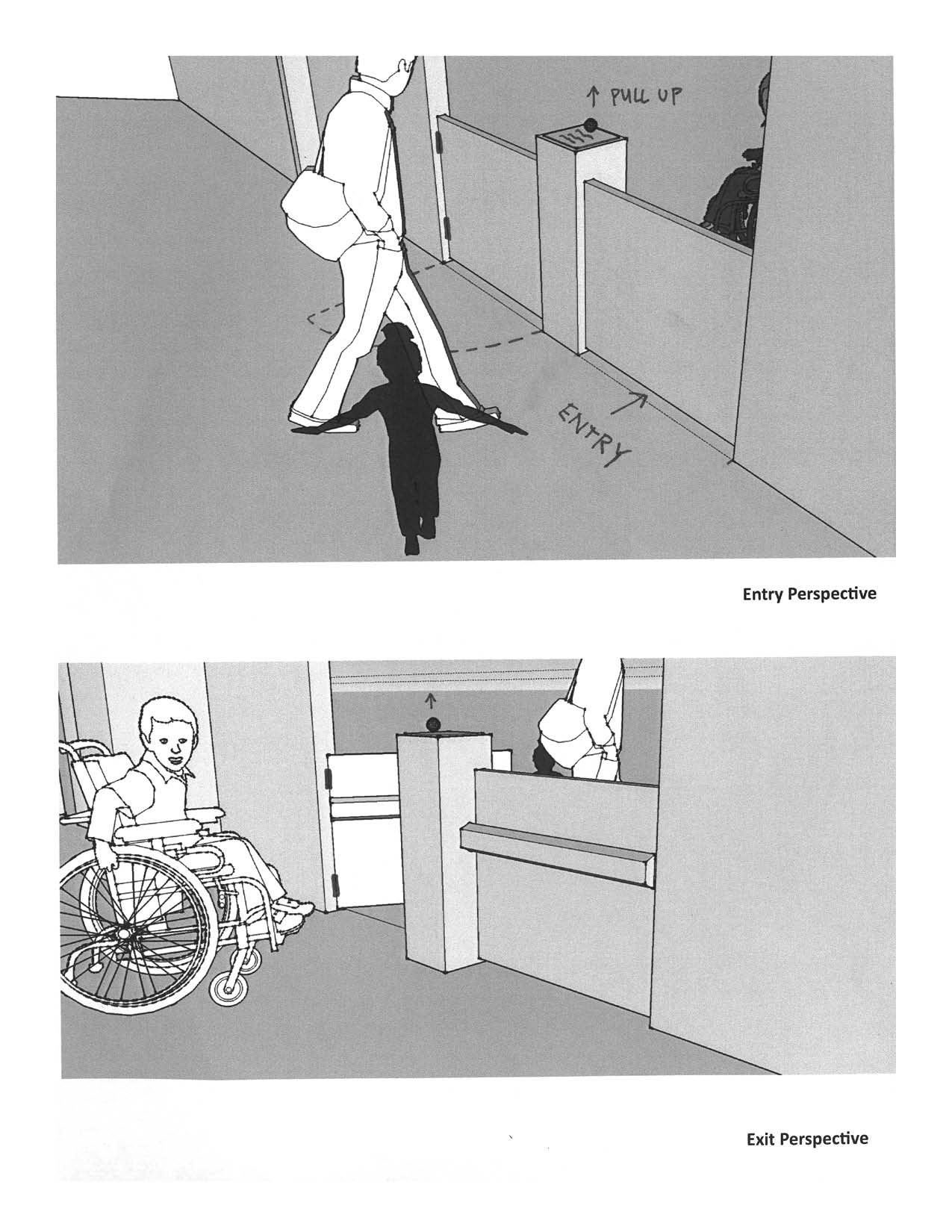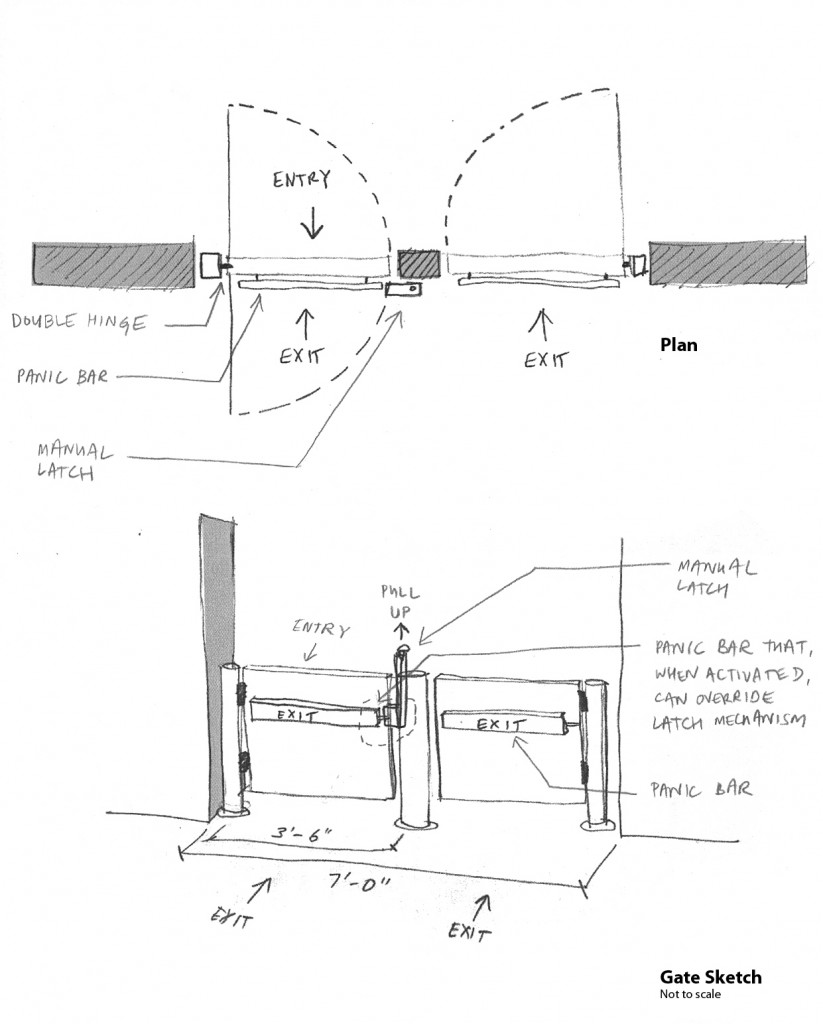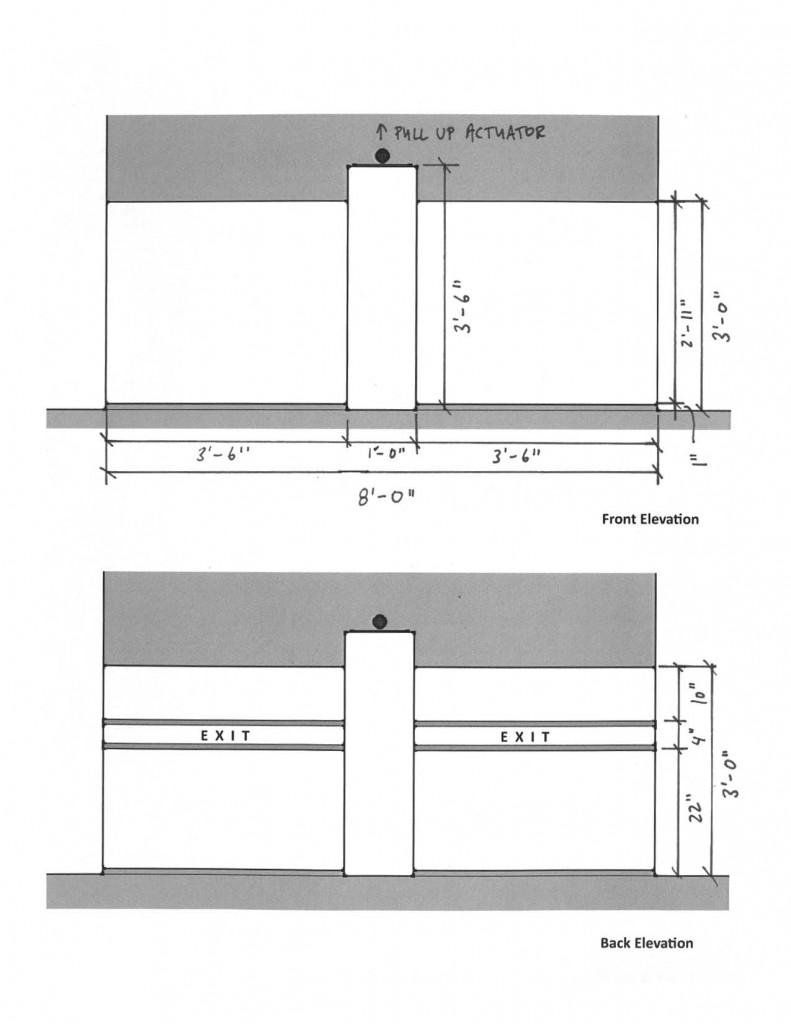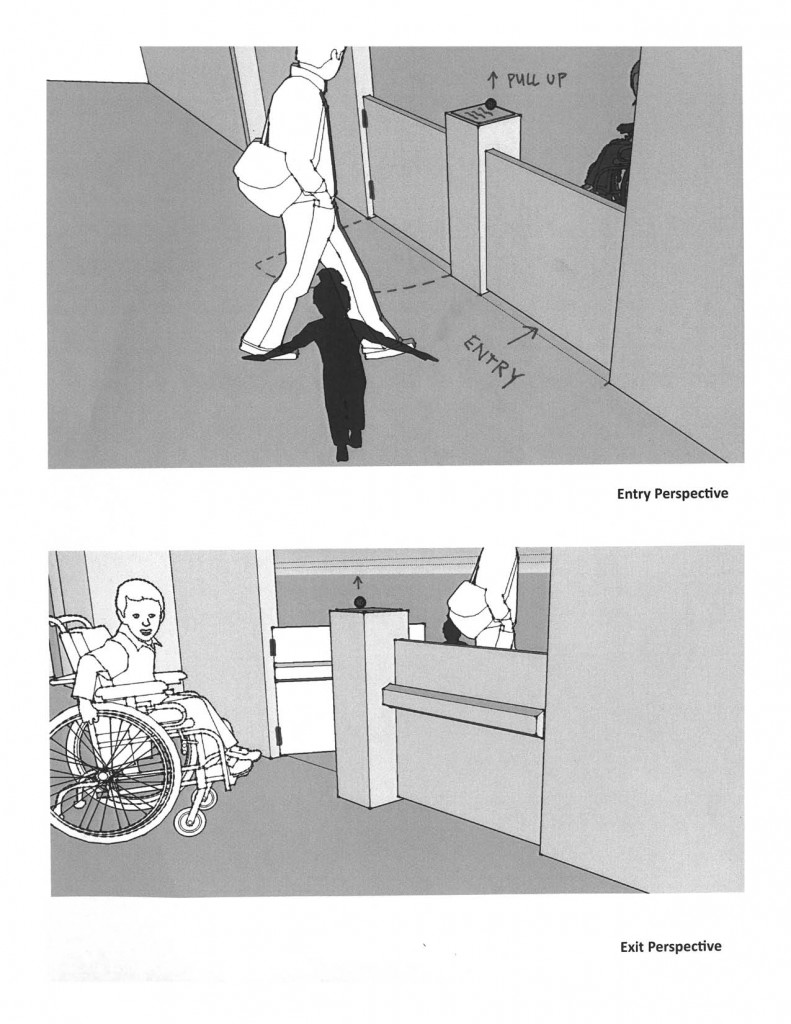I’m looking for some ideas to help a designer with the gates in the sketches below. Here’s the scenario:
The gates lead to/from an area of a children’s museum designed for young kids, and the museum is looking for a way to limit access to the area so that only parents can enter with younger children. Children over 6 without their parents should not be able to enter easily – they need a way to discourage them while still allowing parents to enter. The initial request from the designer was a latch similar to the pull-up mechanism used on pool gates.
Some things to keep in mind:
- Panic hardware is required for egress from this space.
- Two leaves are require for egress, and there’s a possibility of adding a leaf just for ingress, if it’s not possible to come up with a solution that only involves the two leaves that are being used for egress.
- The gates are part of an accessible route.
- At least one leaf will probably have an automatic operator.
- Although the gates are shown with a gap between the bottom of the gate and the floor, the gates could extend to the floor to allow a floor closer / in-floor auto operator to be used.
- One sketch shows a double-acting gate, but I’ve advised the designer against that.
Questions for you:
- How would you allow parents to easily release the panic hardware from the pull side, while discouraging older kids from entering this area?
- What hardware would you use to hang the gate?
- What type of closer and operator would you use?
- How would you stop the door in the fully-open position?
You need to login or register to bookmark/favorite this content.









I haven’t thought this thru yet but how about an acuator button(s) on top of the bollard, say 42″ AFF. Operates an electric strike to allow entry. Top side of bollard makes it invisible to smallest kids but allows older kids and parents access. Egress is “normal” with panics.
That’s one of the possibilities I was talking about with the designer. Do you know if the fact that the button would be on a horizontal surface would affect the maximum mounting height?
I guess no matter what set up there is, how will it prevent anyone from entering?
Card reader with card given to parents only?
This appears to be an example of someone requesting a mechanical or electro/mechanical solution to an administrative problem. Any device that deters someone over 6 will surely be non compliant to ADA. Good luck with the specs on this one. The only way to enforce the limits described is with a volunteer docent (WalMart greeter) at the entry. I am greatly interested in the solution to this problem. — Now on to possible ideas that would work with standard electro/mechanical entry concepts. 1) A card reader that is operated by a disposable Museum entry pass like the metro in DC. 2) A device that accepts a prox token given to the adults upon entry to the building.(lets them into the space and retains the token for re-use) The tokens can even be part of a theft protection system that will signal a reminder at the museum exit if not used at the particular area.
Is a horizontal button even allowed for ADA compliance due to visual limits? And someone over 6 years old would be able to see it and enter. That was one of the criteria to limit.
I would go with a full height wide stile Kawneer storefront type double door assembly. Complete with header which can be decorated with an arch etc. if desired.
Use the 99L POOL as you had listed in a previous article or as Jack says an electric strike with an appropriate height release button for entry.
Going this way solves all of the swing, closer, operator mounting issues. It will be more secure and probably less cost from the design stand point. Plus the younger vistiors can put nose and finger prints on the lower glass versus trying to jump high enough to see over the gate.
If they really want it open above the exit device you can use a two piece glass door and leave the top piece out.
I don’t know about you but my son has been able to recognize and use push buttons since he was 3 (in fact he loves it). Even if you were to put the operator in a horizontal position or otherwise obscure it, that’s not going to stop anyone 6+ from using it without some kind of access control.
I think the real kicker here is the age range of people you are trying to keep out. At 6+, there isn’t much out of reach or otherwise inaccessible that isn’t also out of reach or inaccessible to any adult.
Also keep in mind anthropometrics. I have cousins who were 6′ tall at 12 years old, and I know several people who barely crack 5′ fully grown. Trying to figure out a height or configuration for the hardware so it is operable by some but not others is pointless IMHO.
I agree with Rich that this is an administrative problem. The only way to solve it without some kind of human supervision is to have a digital supervisor instead (access control). Maybe some kind of barcoded wrist band you get at the front desk like they have at amusement parks which can be scanned at the door? Seems overly complex unless you are using a control system throughout the facility.